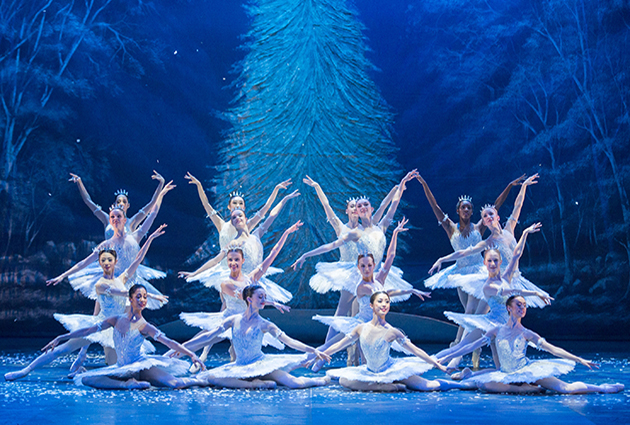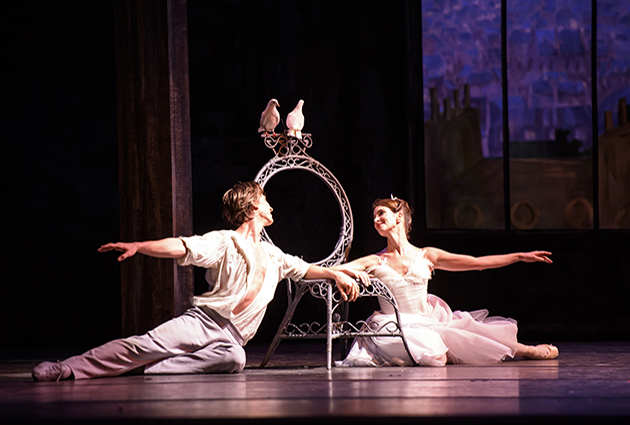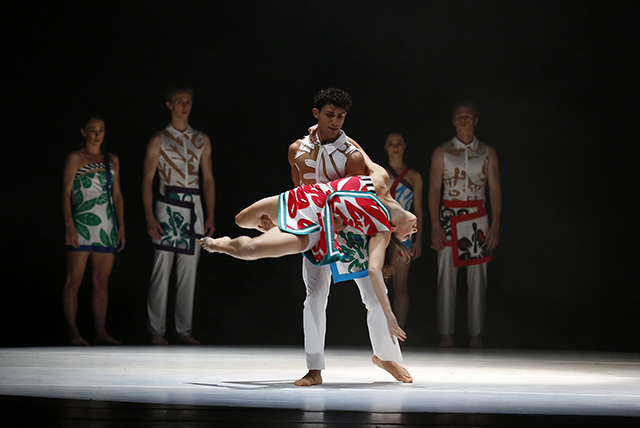Ballet to see this Christmas
See some great Ballet this December, from some contemporary shows to the classic Nutcracker


Dancers of English National Ballet as Snowflakes Photo: (C) Photography by ASH
Thanks to Tchaikovsky’s enchanting score, The Nutcracker has survived for more than a century despite its flimsy narrative; commissioned to choreograph it for the Maryinsky Theatre, Marius Petipa found the story so uninspiring that his initial libretto ended with Clara wandering into the snowy forest, which we consider the ballet’s midpoint.
The public might enjoy an occasional alternative, but The Nutcracker has become as much a part of Christmas in Britain as Handel’s Messiah. The Royal Ballet and English National Ballet have again revived traditional productions that follow the familiar events faithfully while setting them in different designs, and for several weeks Birmingham Royal Ballet danced the most satisfying version on offer, by Peter Wright, before ceding the Hippodrome to pantomime. Northern Ballet will tour David Nixon’s Nutcracker into January, while Scottish Ballet will travel with Christopher Hampson’s Cinderella instead, until the end of that month.
As a welcome antidote to this twinkling mountain of sweetened fantasy, Matthew Bourne’s Sleeping Beauty has returned to Sadler’s Wells. His clever reinvention adds a feisty heroine, a hungry vampire, agile puppets and deliciously decadent fairies to the old fairy tale, cutting the ballet to a lively two hours and packing it with theatrical invention.
Though Mr. Bourne relies all evening on a limited dance vocabulary, his choreography fits the score’s emotional dynamics perfectly and sparkles with dramatic ideas and tart references to Petipa’s original and to other classics—who expected to glimpse Giselle’s mad scene? Tightened since its première in 2012 and performed with immaculate precision and biting characterizations, this production delights the mind as well as the eye.
Fashioned for younger viewers than those who can sit through two acts, Arthur Pita’s The Little Match Girl involves four players plus a one-man band and lasts only an hour. Singing and speaking in Italian, which made several children ask their puzzled parents, “What did he say?” the dancers move and mime simply, sketching Hans Christian Andersen’s sad tale without making it, or anything else, dramatically clear. As an introduction to the magic of live theatre, the production works well and might even launch a life-long interest.
Sleeping Beauty at Sadler’s Wells to 24 January and touring until 30 April www.new-adventures.net
Sign up for the Country Life Newsletter
Exquisite houses, the beauty of Nature, and how to get the most from your life, straight to your inbox.
The Little Match Girl, Lilian Baylis Studio to 3 January. www.sadlerswells.com The Royal Ballet presents The Nutcracker until 13 January. www.roh.org.uk
English Ballet offers The Nutcracker at the Coliseum until 10 January, and follows it with Le Corsaire, 13-24 January www.ballet.org.uk
Northern Ballet dances The Nutcracker at the Grand Theatre, Leeds, until 2 January. www.northernballet.com
Scottish Ballet tours Cinderella to 20 January; www.scottishballet. co.uk
For a frosty holiday treat, try Vertical by the Canadian ice-skating troupe Le Patin Libre, 12-16 January at Somerset House, London; www.somersethouse.org.uk/vertical-le-patin-libre
Two pigeons and Monotones The Dream and A Month in the Country
The Royal Ballet bills Sir Frederick Ashton respectfully as the company’s Founding Choreographer on every printed programme. However, it has not staged his charming ballet The Two Pigeons for 30 years, so it’s no surprise that the London public does not recognize the title and the box office was discounting tickets before opening night.
Sharing a double bill with his elegant Monotones, a luminous miniature of pure movement etching delicate patterns in space, Pigeons reminds us of Ashton’s love of love and his gift for depicting its subtleties. Irritated by his playful girlfriend, a young artist falls for a hot-blooded gypsy. Having followed her to a gypsy encampment, where he becomes the gang’s victim, he returns home, tail between legs, to his lover’s open arms.

In two swift acts, Ashton gives us romance and betrayal, jealousy and forgiveness. On opening night, Lauren Cuthbertson and Vadim Muntagirov danced as naturally as ordinary people walk and revealed every nuance of the lovers’ gentle sparky exchanges—a shrug alone raised a laugh. Laura Morera as the seductive Gypsy Girl and Marcelino Sambé in a featured solo for a Gypsy Boy provided the show-stopping pyrotechnics, but in the end the lovers won our hearts, as Ashton intended.
On a rare visit to the UK, the Royal New Zealand Ballet presented four unfamiliar pieces at the Linbury Studio Theatre just as Two Pigeons arrived on the stage upstairs, of which one, The Anatomy of a Passing Cloud, referred directly to New Zealand’s history and contemporary culture.
Looking back to the country’s involvement in World War I, Andrew Simmons’ Dear Horizon and Neil Ieremia’s Passchendaele might have commemorated any nation’s wartime bravery and sacrifices.

Javier de Frutos, however, chose to celebrate the words, music and indigenous movement from which New Zealanders form their identity. Finding the spirited rhythm for certain phrases in their accompanying chants, he wove exuberant athleticism into kaleidescopic patterns, introducing us to the dancers’ meticulous training, warm personalities and cool confidence all at once.
The Two Pigeons/Monotones remains in repertory until 5 December. The Two Pigeons returns in January, paired with Ashton’s Rhapsody. www.roh.org.uk
Birmingham Royal Ballet presents Ashton’s The Dream and A Month in the Country, 17-20 February. www.brb.org.uk.
For something competely traditional, the English National Ballet is showing The Nutcracker until January 10, and The Northern Ballet are also touring The Nutcracker until December 16 and then it will play at Leeds Grand Theatre until January 2.
To discover more international talent, explore the London International Mime Festival, 9 January to 6 February. www.mimelondon.com
-
 ‘It had the air of an ex-rental, and that’s putting it politely’: How an antique dealer transformed a run-down Georgian house in Chatham Dockyards
‘It had the air of an ex-rental, and that’s putting it politely’: How an antique dealer transformed a run-down Georgian house in Chatham DockyardsAn antique dealer with an eye for colour has rescued an 18th-century house from years of neglect with the help of the team at Mylands.
By Arabella Youens
-
 A home cinema, tasteful interiors and 65 acres of private parkland hidden in an unassuming lodge in Kent
A home cinema, tasteful interiors and 65 acres of private parkland hidden in an unassuming lodge in KentNorth Lodge near Tonbridge may seem relatively simple, but there is a lot more than what meets the eye.
By James Fisher